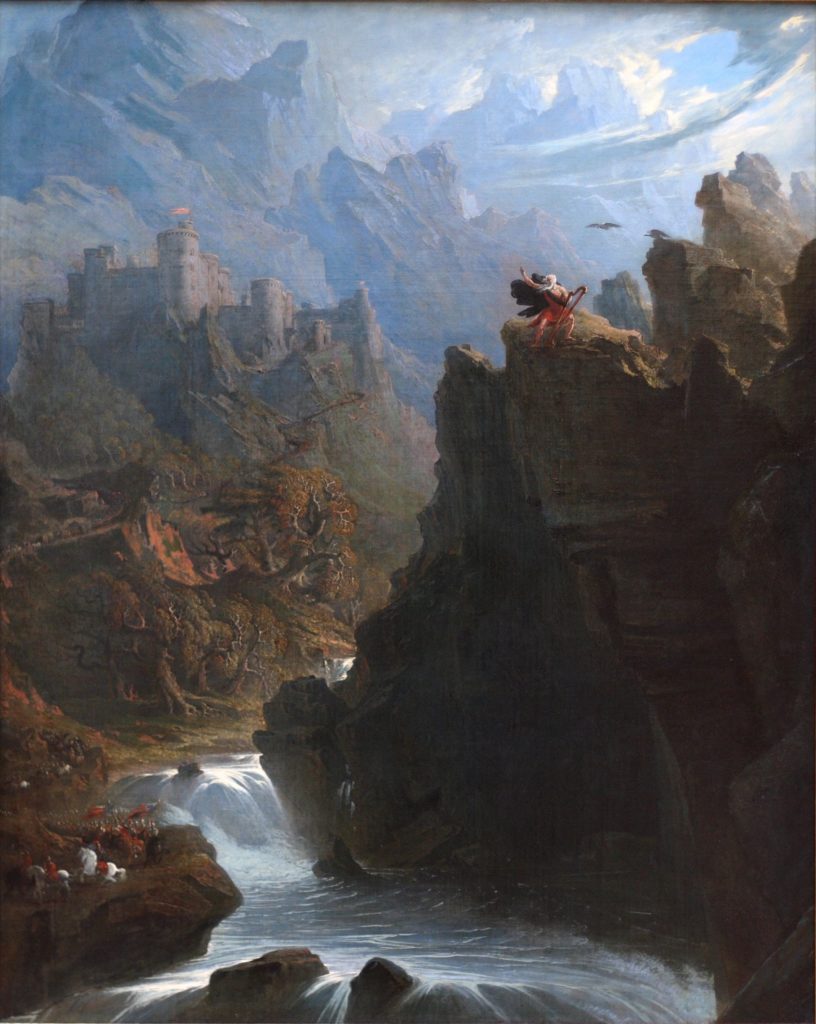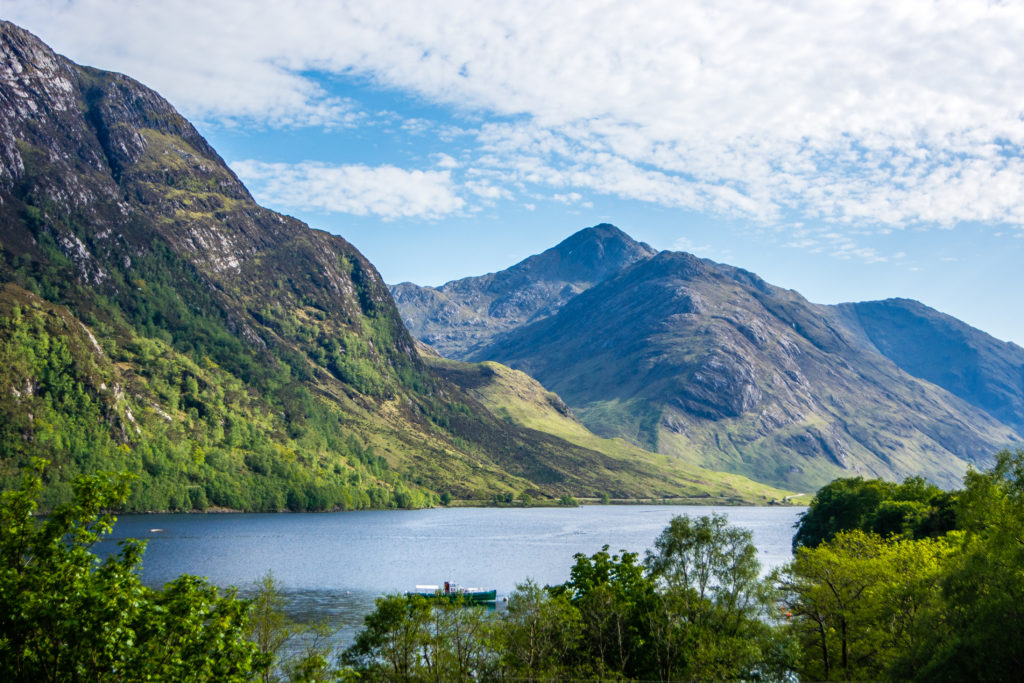I am currently redrafting the manuscript of my book, Mountains Before Mountaineering: The Call of the Peaks Before the Modern Age, which I’m delighted to say will be coming out with the History Press in spring 2024. I am finding, inevitably, that I am having to cut a lot of material: I have a word count to keep to, and some of it just doesn’t fit within the structure I’ve developed. One such passage which I regretfully let fall on the cutting-room floor focussed on mountains in seventeenth- and eighteenth-century Scottish Gaelic poetry.
These poems are perhaps the closest we can come to written accounts of the lives of the mountain-dwellers of early modern Scotland. As a language, Scottish Gaelic – once the language of the royal court – was even then being pushed into the geographical margins, spoken largely in the Highlands and Islands. There, traditions of bardic court poetry, composed in the Gaelic, continued. Bards would be attached – or would attach themselves – to the households of specific lairds, and would compose poems to commemorate their births, deeds, marriages, and deaths.
These poems would be what are called ‘oral’ compositions. The most famous examples of this are Homer’s Odyssey and Iliad, which were not written down at their first moment of creation but instead were performed, remembered, re-performed, until finally someone decided to write them down. So, the bards whose works we are about to look at did not necessarily write them down themselves and indeed many were non-literate. So these poets were not ‘external elites’ in the sense of being city-dwelling, university-educated, literate authors; several were even female. However, they did hold positions of relative privilege as significant members of a laird’s household.
The mountain perspective
Many of these bards would have liked their listeners to believe that they composed their poems not just about the hills but also on them. Iain Luim MacDhòmhnaill (c. 1624 – c.1710) declared at the opening of one poem that ‘I am sitting on the hill with no company, all alone’, whilst in another he proclaimed that ‘As I lie on my elbow in a high mountain glen, I have good reason to find joy in laughter’.[1] Another seventeenth-century bard, Màiri nighean Alasdair Ruaidh (c. 1615 – c.1707, known in English as Mary MacLeod), who served the MacLeods of Dunvegan on Skye, was exiled to the Isle of Mull for offending her laird. She composed a lament ‘[s]itting here on the knoll, forlorn and unquiet’, looking out across the sea at the islands of Islay and Jura. This view – one she would not be able to see from her rightful home – is for her a striking marker of her change in circumstances.[2]
It seems to me that in these examples the mountain summit serves to suggest a sense of poetic ‘vision’ – from the mountaintops on which they are (supposedly) composing their words, the bards have a clearer view not just of the physical world around them but of the topics they are speaking of.

Hunting and fighting
From their mountain vantage points, then, what did these bards speak about? Mountains regularly appear in Scottish Gaelic poetry as the location of the hunt. In particular, Gaelic poets celebrated the virility of the men who sought their quarry in the mountains. Màiri nighean Alasdair Ruaidh (recalled from exile) composed a lament for her laird when he was on his deathbed and remembered that ‘going to traverse the peaked hills thou didst love the active hounds, and the gun that answered readily to the trigger’.[3] Iain Luim gave a similar reminder to his laird, who was not dying but had become enchanted by the urban vices of London. He spoke of the young man’s adventures ‘ascending the slope of Ladharbheinn’ (a Munro in the Western Highlands, 1,020m), to which the bard hoped he would return. In another poem, Iain Luim spoke of ‘vigorous young men’ who ‘used to bend the yew bow as they traversed the rocky mountains on the care-free expedition’.[4] Mountain hunts were virtuous, energetic, and exciting – and, it seems, rather less marred by accidents than Theuerdank’s attempts at catching chamois.
The Highland hills were also the backdrop to martial adventures. Màiri nighean Alasdair Ruaidh performing a wedding song that would probably warrant raised eyebrows at a modern celebration, declared that
My darling would ascend
the summit of high peaks;With thee the pipe
briskly playing in the pursuitBright sword-blades
that would make carnage.
Similarly, in a dirge for the chief of the MacLeods of Raasay (a cousin to her own laird), she spoke of him as a ‘dear warrior’, carrying his gun to ‘the cairn’s summit or… the elbow the peaks’, where blood would flow ‘in front of its discharge’.[5] Meanwhile, Iain Luim indulged in a particular hatred for the Campbells: recording the Battle of Inverlochy, which took place in the shadow of Ben Nevis in 1645, he described himself climbing a brae in order to get a good view of the battle as it unfolded, from whence he delighted in viewing his own clan descending upon the ‘wry-mouthed Campbells’ in a ‘frenzy’ of courage and violence.[6] Thirty years later, he complained at having to watch a company halt ‘on the slope of Ben Buidhe’, instead of entering Glen Aray where, he viciously hoped, they would have ‘cut the grin off the wry-mouthed Campbells’.[7] So, the seventeenth-century highland mountains symbolised heroism and victory – albeit rather more bloody than the modern-day ‘conquest’ of a mountain summit by mountaineers.
The mountain and the laird
In the examples of both hunting and fighting, mountains were associated with the noble character of a laird: they were the landscape within which he demonstrated his skills in hunting and prowess in battle. Another female bard, Sìleas na Ceapaich (c.1660-c.1729), made a more immediate analogy in a lament for a laird who died in 1721, in which she sought to capture his strength and the reliability which he represented to his clan. ‘You were’, she mourned ‘an undrainable loch… you were Ben Nevis above every moor, you were an unscaleable crag’. The laird and the mountain were one and the same.

[1] ‘The Return of Ranald Og’, in Annie M. Mackenzie, ed., Orain Iain Luim: Songs of John MacDonald, Bard of Keppoch (1964), p. 7, and a poem celebrating the coronation of Charles II, in Peter Davidson, ed., Poetry and Revolution: An Anthology of British and Irish Verse, 1625-1660 (1998), p. 505.
[2] J. Carmichael Watson, ed., Gaelic Songs of Mary MacLeod (1965), p.37, notes p.117.
[3] Watson, Gaelic Songs, p. 23.
[4] Mackenzie, Orain Iain Luim, p. 125.
[5] Watson, Gaelic Songs, pp. 5-7 and p. 29.
[6] Davidson, Poetry and Revolution, p. 505.
[7] Mackenzie, Orain Iain Luim, p. 153.

